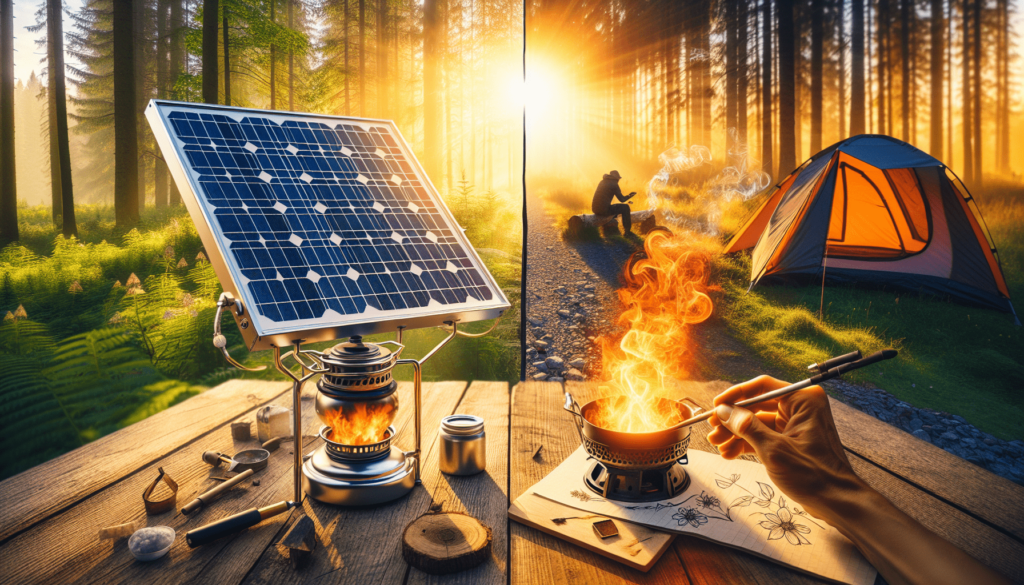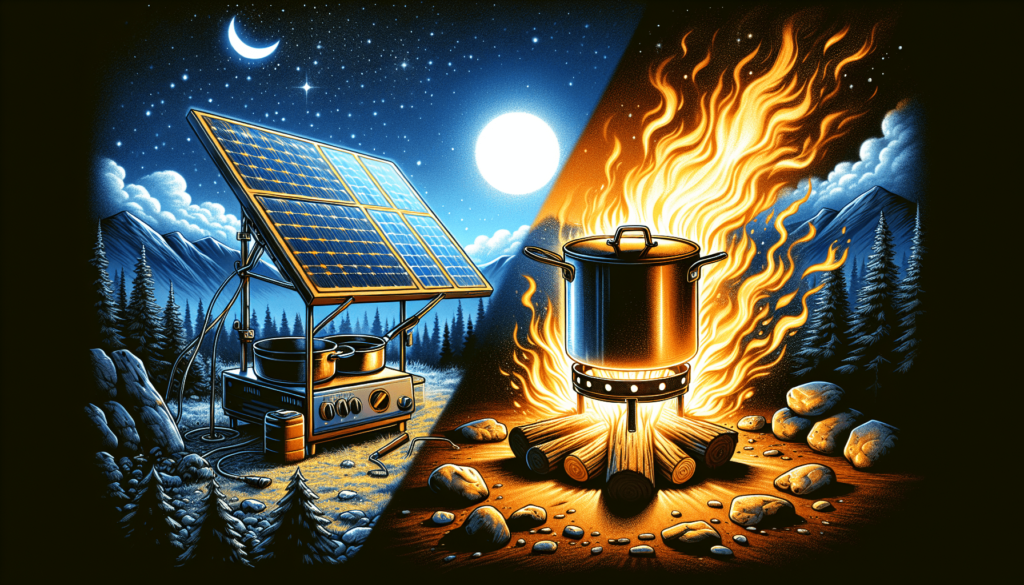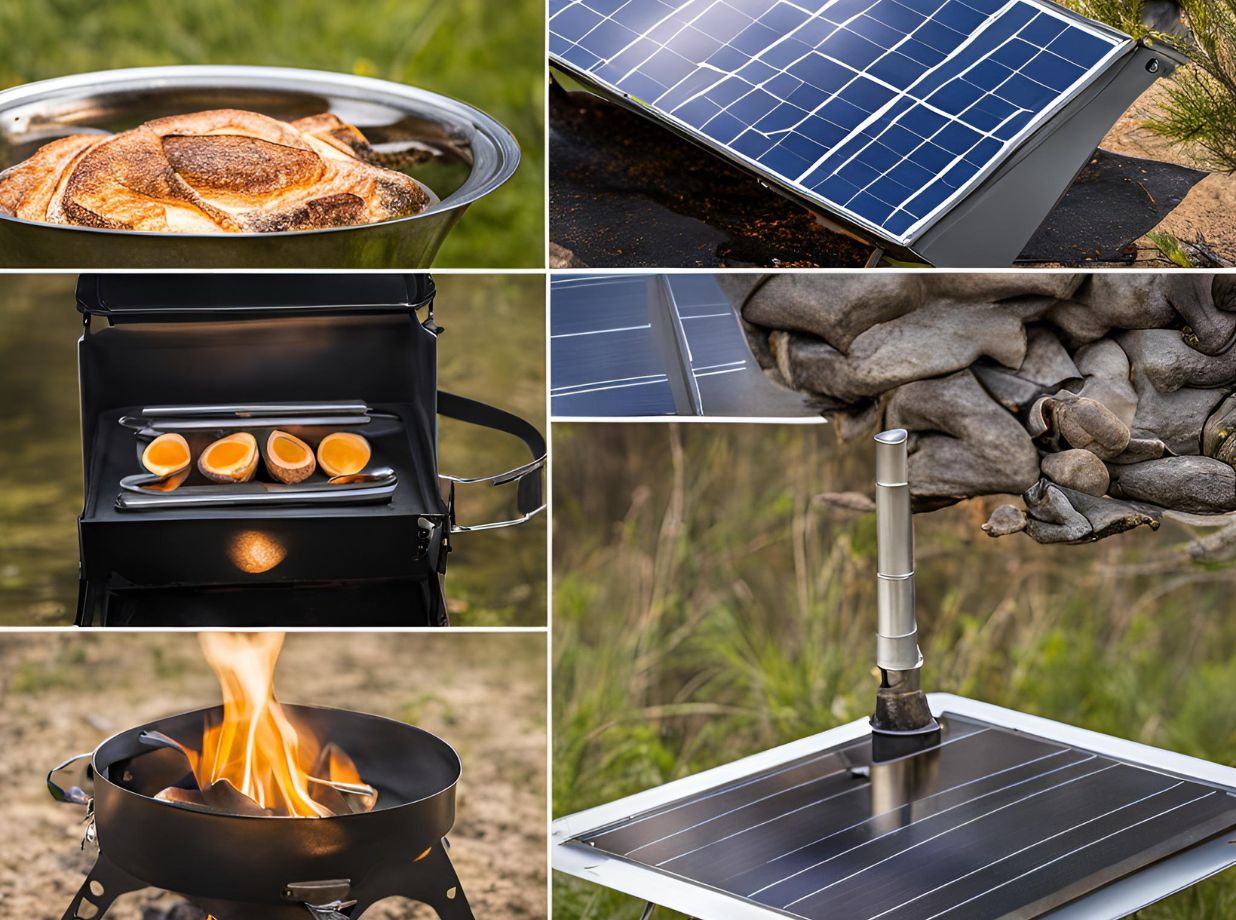Have you ever found yourself standing at your campsite, the first light of dawn peeking through the trees, wondering how you’ll prepare your morning coffee? Whether you are a seasoned camper or someone planning their first outdoor adventure, the tools you use for cooking can significantly shape your experience. Today, let’s journey through the tale of sunlight and flames, delving into the worlds of solar and traditional camping stoves.

The Appeal of Camping Stoves
Camping fills your soul with a sense of adventure, independence, and a profound connection to nature. However, those feelings of contentment can quickly fade when your stomach starts growling. This is why choosing the right camping stove can be as crucial as picking the perfect tent spot. Camping stoves are not just about functionality; they contribute to the overall ambiance and experience.
The Essence of Solar Camping Stoves
Solar camping stoves carry the promise of a greener, more serene cooking experience. They harness the power of the sun, therefore providing an eco-friendly alternative to traditional stoves. These stoves are ideal for those who wish to minimize their environmental footprint and enjoy the tranquility of cooking without the roar of a gas flame.
The Charm of Traditional Camping Stoves
On the other hand, traditional camping stoves bring a sense of rugged reliability. Whether fueled by propane, butane, or even wood, these stoves are designed to withstand the elements and deliver a consistent cooking performance. For many, the crackle of a gas burner or the smoldering embers of a wood fire are inseparable from the camping experience.
Solar Camping Stoves: Harnessing the Power of the Sun
Solar camping stoves might seem like a modern innovation, but the idea of utilizing solar energy for cooking dates back centuries. These stoves come in various forms, each with its own set of advantages and limitations.
Advantages of Solar Camping Stoves
- Eco-Friendly: Solar stoves produce no harmful emissions, making them an excellent choice for environmentally conscious campers.
- Quiet Operation: Without the roar of a burner, you can better enjoy the sounds of nature.
- Fuel Independence: As long as the sun is shining, you have an endless supply of cooking energy.
Challenges with Solar Camping Stoves
- Weather Dependent: Solar stoves require ample sunlight, making them less effective during cloudy days or in dense forested areas.
- Longer Cook Times: Unlike gas stoves, which can boil water in minutes, solar stoves generally take longer to cook food.
- Bulkiness: Some solar stove designs can be larger and heavier, making them less suitable for lightweight backpacking.
Types of Solar Camping Stoves
- Solar Box Cookers: These are insulated boxes that trap sunlight using reflectors. They’re great for slow-cooking meals over several hours.
- Parabolic Solar Cookers: These stoves use a parabolic dish to focus sunlight onto a central cooking pot. They cook faster but require frequent repositioning to stay aligned with the sun.
- Panel Cookers: Combining elements of both the box and parabolic designs, panel cookers use reflective panels to direct sunlight into a cooking pot.
Traditional Camping Stoves: Tried and True Methods
Traditional camping stoves offer the reliability of time-tested designs and a variety of fuel options to suit different needs and preferences.
Advantages of Traditional Camping Stoves
- Consistency: These stoves deliver a steady heat source, ideal for quick and efficient cooking.
- Versatility: They come in various models, from ultralight backpacking stoves to robust multi-burner setups for car camping.
- Weather Resilience: Most traditional stoves can perform well in variable weather conditions, including wind and rain.
Challenges with Traditional Camping Stoves
- Fuel Dependance: You need to carry fuel canisters or find appropriate natural fuels, which can add weight to your pack.
- Environmental Impact: Burning fuels can produce emissions that impact the environment.
- Noise: The sound of a gas burner can disrupt the peace and solitude of the great outdoors.
Types of Traditional Camping Stoves
- Canister Stoves: Quick and convenient, these stoves use pre-filled fuel canisters and are popular among backpackers.
- Liquid Fuel Stoves: These versatile stoves can run on various liquid fuels, making them suitable for international travel where specific fuels might be scarce.
- Wood-Burning Stoves: These utilize small twigs and branches, reducing the need to carry fuel but requiring more effort to collect.
Detailed Comparison: Solar vs Traditional Camping Stoves
Let’s dig deeper into how these stoves stack up against each other in various aspects. Understanding these differences can help you make an informed decision based on your camping style and priorities.
Performance
| Criteria | Solar Stoves | Traditional Stoves |
|---|---|---|
| Heating Time | Generally slower as it relies on sunlight to reach optimal cooking temperatures | Quick heating, especially with liquid and canister stoves |
| Temperature Control | Limited control, as it depends on the intensity of sunlight | Adjustable flame settings for precise cooking |
| Cooking Capacity | May be limited by the size of the solar collector | Wide range of options, from single-burner to multi-burner models |
Environmental Impact
| Criteria | Solar Stoves | Traditional Stoves |
|---|---|---|
| Emissions | Zero emissions, purely relies on sunlight | Produces emissions depending on fuel type |
| Fuel Source | Renewable, as long as there is sunlight | Non-renewable (gas, liquid fuels), or limited renewable (wood) |
Convenience
| Criteria | Solar Stoves | Traditional Stoves |
|---|---|---|
| Portability | Some models can be bulky and require careful packing | More compact and easier to transport, especially canister stoves |
| Setup | Simple, but finding optimal positioning for maximum sunlight can be challenging | Generally straightforward with minimal setup time |
| Refueling | Unlimited, as long as there’s sunlight | Requires carrying and managing extra fuel |
Cost
| Criteria | Solar Stoves | Traditional Stoves |
|---|---|---|
| Initial Cost | Typically higher due to advanced technology | Varies, but often lower initial investment |
| Running Costs | Minimal, no need to purchase fuel | Ongoing fuel costs can add up over time |
| Maintenance | Generally low, but some components may require occasional cleaning | Requires regular cleaning and sometimes o-rings or other parts need replacing |

Practical Scenarios: When to Choose Which Stove
Deciding between a solar and a traditional camping stove often comes down to the specifics of your outdoor adventure. Here are some scenarios to consider.
Weekend Getaway in a National Park
If you’re camping over a weekend in a well-wooded national park, a traditional camping stove would likely serve you best. You won’t need to rely on constant sunlight, and you can enjoy the brisk efficiency of a canister or liquid fuel stove, allowing you more time to explore and relax.
Remote Backpacking Adventure
For a remote backpacking trip where you aim to tread lightly on the environment, a solar stove can be an excellent choice. With no fuel to carry, your pack can be lighter, and you can relish the quiet, emission-free cooking experience. Ensure you have plenty of sunlight and perhaps a backup option for overcast days.
Family Camping Trip
When camping with family, especially with kids, convenience and reliability are key. A traditional multi-burner stove allows you to cook larger meals efficiently and manage multiple dishes at once. It’s ideal for preparing hearty meals that keep everyone satisfied and energized for a day of adventure.
Desert Camping
In the desert, where the sun’s rays are almost always guaranteed, a solar camping stove is an optimal choice. You can make the most of the ample sunlight to cook your meals while enjoying the natural quietude of the desert landscape.
Winter Camping
Winter camping introduces a host of challenges, including the need for a reliable heat source. Traditional camping stoves, especially liquid fuel stoves, perform well in cold temperatures. They can burn various oils that remain liquid despite the freezing conditions, ensuring you can cook and melt snow for water.
Tips for Making the Most of Your Camping Stove
To optimize your camping stove experience, regardless of the type, here are some practical tips that can enhance your outdoor culinary adventures.
Solar Cooking Tips
- Plan Ahead: Solar cooking requires more time. Start your meal preparations well ahead of meal time.
- Optimize Positioning: Adjust your stove frequently to keep it aligned with the sun throughout the day.
- Reflective Enhancements: Use additional reflective materials like aluminum foil to focus more sunlight onto your cooking area.
Traditional Stove Tips
- Fuel Management: Keep track of your fuel levels. Carry an extra canister or additional fuel if you’re unsure about the duration of your trip.
- Wind Protection: Use a windscreen to enhance efficiency and save fuel.
- Maintenance: Regularly clean your stove and check for any wear and tear to ensure it functions smoothly.
Conclusion: Making Your Choice
Choosing between a solar and traditional camping stove stems from your individual needs, environmental concerns, and the specific context of your trip. Solar stoves offer the allure of a greener, quieter experience, harnessing the timeless power of the sun. Conversely, traditional camping stoves bring a reliable, efficient, and versatile cooking solution that has stood the test of time.
Reflect on your priorities, the environment where you’ll be camping, and the kind of experience you want to create. Whether you embrace sunlight or opt for the enduring dance with flames, the right camping stove can transform your outdoor meals into cherished memories.
So, as you pack for your next adventure, consider the tale of sunlight and flames, and choose the companion that will best complement your journey. Happy camping and delightful cooking!



